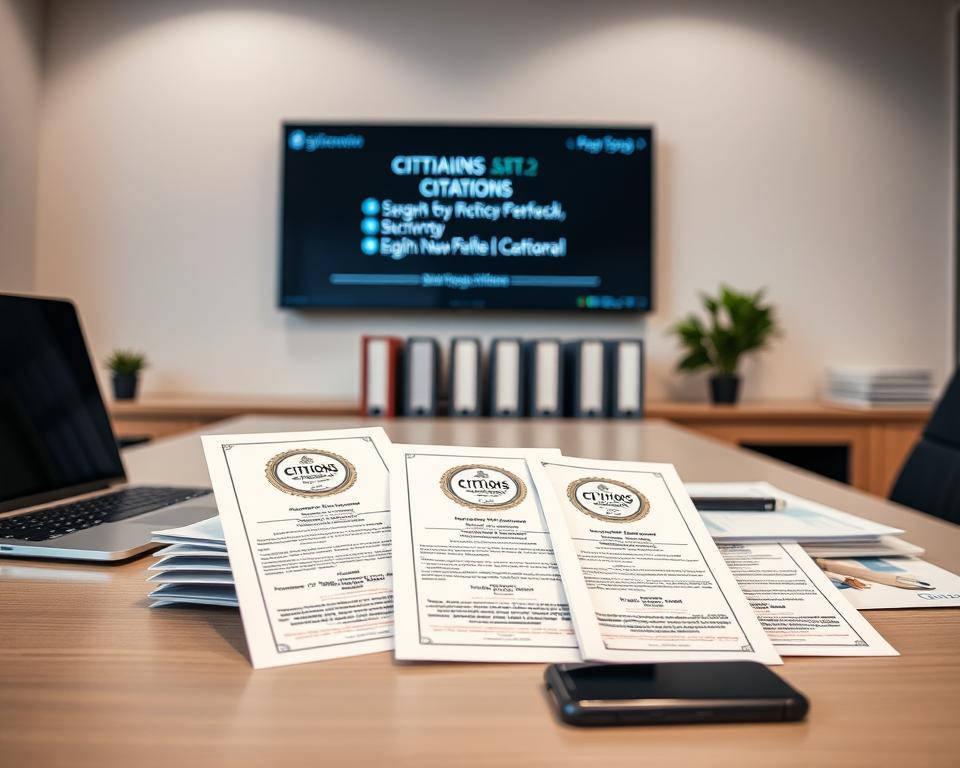Marketing1on1: Local SEO Experts – Grow Your Business
Were you aware 78% of handheld users check out a company in 24 hours upon locating it via regional search outcomes? That’s the power of dominating local search—exactly that which Marketing1on1 assists companies in accomplishing.
Marketing1on1 stands as a premier agency specializing in boosting visibility on Google Search and Maps. Their techniques guarantee businesses appear when customers search for services nearby. With over 20 years of experience, they’ve helped hundreds of clients grow through tailored solutions – Palmdale SEO company.
Google prioritizes localized results, particularly for searches including “near me”. Marketing1on1’s expertise ensures your business stands out, attracting in-person visits and digital engagements. Their tested tactics involve refining Google My Business, curating listings, and monitoring performance indicators.
Crucial Summaries
- 78% of mobile searches lead to in-person visits within a day.
- Marketing1on1 concentrates on elevating search positions for enterprises.
- Google prioritizes local outcomes for service-related searches.
- 28% of local queries convert directly into purchases.
- Their control panel connects with leading platforms for smooth oversight.
What Is Local SEO and Why Does It Matter?
92% of consumers select companies from the initial page—what is your ranking? Hyper-targeted optimization ensures your store, clinic, or restaurant appears when nearby customers search. Different from old-school tactics, it emphasizes nearness, Google Business Profiles, and regional directories.

Defining Hyper-Targeted Optimization
This method isolates urban or area-specific prominence. For instance, a wedding boutique in Charlotte experienced a 130% surge in visits through local query optimization. Critical contrasts with general approaches:
- Closeness: Google favors companies nearest to the user.
- References: Uniform entries on Yelp or Yellow Pages foster reliability.
- Testimonials: 81% of buyers consult reviews prior to visiting.
The Impact of Local Search on Your Revenue
Restaurants using these methods doubled foot traffic. For what reason? 800 million monthly “near me” queries across the U.S. open limitless possibilities. Google evaluates companies using:
- Relevance: How accurately your solutions correspond to the search.
- Proximity: The geographical separation from the inquirer.
- Prominence: Web standing and external link endorsements.
Voice search enhances this effect—71% prefer natural-language queries like “best pizza near me.” Adjusting to these trends maintains your advantage.
How Local SEO Works: The Key Mechanics
Google’s algorithm prioritizes three key elements for nearby searches. These scoring criteria—pertinence, closeness, and visibility—decide who gets into the sought-after map cluster. Perfect these, and your enterprise emerges as the leading selection for nearby clients.
Google’s Local Ranking Factors Explained
This is the method by which Google evaluates: 55% suitability, 30% closeness, and 15% visibility. Pertinence indicates how well your offerings correspond to the search. A bakery optimizing for “gluten-free cupcakes” will rank higher for that exact search.
Closeness is equally significant. When two establishments provide comparable offerings, the nearer one generally prevails. Visibility relies on reputation—consider testimonials, references, and digital authority. A 5-star Google Business Profile with 100+ reviews outshines competitors.
Local vs. Traditional SEO: Distinctions Explained
Focused local optimization zeroes in on map presence and consistent NAP data. Traditional methods prioritize backlinks and broad keywords. For instance, OHSO Brewery increased visits by 130% through individual profile optimization per location.
- Tailored Results: The map pack updates within a 1-mile radius.
- Mobile-First: 72% of consumers access shops within a 5-mile range.
- Instruments: Resources like Local Falcon trace rankings at the block level.
The Power of Google Business Profile for Local Rankings
A complete Google Business Profile can boost visits by 70%—are you maximizing yours? Profiles with precise information attract 50% greater purchase intent. This free tool is your digital storefront for nearby customers.
Optimizing Your Profile for Peak Visibility
Start with verification. Google verifies your establishment’s address using mail or phone methods. Omitting this phase obscures your profile from queries. Complete each section:
- Categories: Primary and secondary category picks impact 43% of rankings. Select carefully.
- Visuals: A set of 10+ superior images boosts conversion rates by 35%. Showcase products, staff, and interiors.
- Hours: Correct timings avert dissatisfied customers and ranking losses.
Optimizing Every Section for Better Performance
Regular updates keep your profile competitive. Organize posts with resources like Semrush Social to spotlight offers. Emulate rival keywords from service menus for pertinence.
Elements like “outdoor seating” or “free Wi-Fi” sort your company for specific searches. Associate your profile with localized landing pages—not your general homepage—to secure enhanced conversions.
Answer feedback within 48 hours. Interaction cues enhance your profile’s weight in Google’s system. A 5-star profile with 100+ reviews outranks silent competitors.
Mastering Local Keyword Research
Selecting effective keywords is crucial for online prominence. For enterprises focusing on nearby audiences, keywords like near me or in [city] generate 46% of queries. Tools like SEMrush and Google Keyword Planner help uncover these high-intent phrases.
Tools to Discover High-Intent Local Keywords
Initiate with competitor research. The SEMrush Keyword Gap instrument highlights weaknesses in your plan. For example, an HVAC company found 24-hour AC repair Phoenix converted 3x better than generic terms.
Yelp Suggest extracts lesser-known searches like open now Mexican restaurants downtown. Geo-grid instruments such as Local Falcon detect lagging zones. Voice search adaptation is crucial too—71% of users request services in a conversational manner.
Comparing Long-Tail and Short-Tail Terms for Local SEO
Long-tail phrases (4+ words) make up 62% of searches. They are detailed, such as best gluten-free bakery Brooklyn. Short-tail terms (bakery near me) cast a wider net but attract less qualified traffic.
Emphasize qualifiers: in [city] implies deliberation, whereas near me suggests immediacy. A coffee shop targeting best latte Williamsburg saw a 35% traffic boost by refining its keyword mix.
NAP Citations: Building Trust with Consistency
Consistent business details online build credibility—just like a well-kept storefront. Your business name, phone number, and address (NAP) must match across every platform. Even minor discrepancies confuse customers and hurt rankings.
Premier Directories for Local Company Entries
Kick off with key directories: Google Business Profile, Apple Maps, and Yelp. Sector-specific listings (e.g., ZocDoc for medical services) enhance targeted exposure. A plumbing company saw 40% more conversions after fixing listings on these sites.
Data aggregators such as Data Axle distribute your NAP details to various smaller platforms. Maintain precision to prevent extensive mistakes. Hint: Collaborate with your Chamber of Commerce to secure credible backlinks.
Identifying and Repairing Citation Inconsistencies
Utilize SEMrush Listing Management for spotting discrepancies. Combine duplicate entries—such as dual Yelp pages for a single site. Comply with these NAP standards:
- Exact match: “Ave” vs. “Avenue” breaks consistency.
- Formatting: (555) 123-4567 compared to 5551234567 muddles algorithmic recognition.
- Updates: Modifying your phone number should prompt simultaneous edits across listings.
Establish a standard guide for franchises to keep details uniform. Tools like BrightLocal track corrections in real time.
On-Page Optimization Tactics for Local Companies
Want more customers from your area? Optimizing your website’s on-page elements can make all the difference. Companies featuring region-specific pages see a 78% improvement in rankings—indicating that subtle modifications can yield substantial gains.
Crafting High-Impact Title Tags and Meta Descriptions
Your title tag functions as a virtual shop sign. Business Name + Unique Feature”. For example, “Emergency Plumbing in Austin .
Meta descriptions should include geo-modifiers. “Best organic café in Portland” performs better than generic phrases. Keep both under 60 characters to avoid truncation.
Creating High-Converting Local Landing Pages
Custom pages for every region enhance pertinence. Feature integrated maps, team biographies, and local client testimonials. A roofing company tripled leads by adding neighborhood-specific case studies.
Apply LocalBusiness schema incorporating geo-coordinates to enable search engines to feature your address and hours in the results.
- Interlinked location strategy: Link every area page to a primary services hub.
- Responsive design: 53% of searches abandon non-mobile-friendly sites.
- Updated information: Revise community guides in line with the seasons.
The Impact of Digital Reviews on Local Search
93% of buyers read testimonials prior to selecting a company—what about yours? Reviews foster trust, and search algorithms boost profiles with current, detailed feedback. Indeed, review sentiment influences 17% of your search visibility.
Simple Ways to Encourage Happy Customers to Share Feedback
Make leaving reviews effortless. Place QR code table tents at checkout or send post-service SMS links. Marketing1on1’s tracked shortcuts boost participation by 40%.
- Coach team members: A quick ask post-purchase increases submissions.
- Exploit social networks: Instagram Story stickers link directly to review platforms.
- The right timing is crucial: Request feedback within 24 hours of service.
Dealing with Negative Testimonials Effectively
One negative review can discourage 30 potential buyers. Respond swiftly with the AAA method: Acknowledge, Apologize, Act. Move tense conversations offline using a “Let’s correct this—please email us” tactic.
Resources such as Semrush notify you of fresh reviews. A dental office achieved a 25% increase in bookings by openly addressing customer concerns.
Pro tip: Showcase top reviews on service pages. Customer endorsements enhance trust and encourage additional reviews.
Earning Backlinks for Community Authority
Links impact roughly 30% of your search presence—are you securing the proper ones? Quality backlinks indicate trustworthiness to search algorithms, elevating your company above competitors. Below is a methodical approach to secure them.
Community Sponsorships and Local Link Building
Back a Little League squad or community 5K charity event. These alliances frequently come with links on promotional sites. An HVAC company gained 42 authoritative links by partnering with a food bank—proof that goodwill pays off.
Aim for platforms like Chamber of Commerce databases. Such directories commonly provide dofollow link opportunities. Expert tip: Assemble media kits for outreach to facilitate journalist features of your enterprise.
Reclaiming Lost Links and Unlinked Mentions
Leverage Ahrefs Content Explorer to detect unlinked business mentions. Send a friendly note: “Thank you for the mention! Could you add a link to our site?” This approach helped a bakery reclaim over 15 backlinks.
HARO (Help a Reporter Out) positions owners as experts. Provide responses enriched with local perspectives. An HVAC specialist obtained a Forbes feature through sharing regional insights.
- Broken link building: Find expired partnerships of competitors. Suggest your link as a substitute.
- Schema markup: Utilize LocalBusiness structured data to link mentions with your company profile.
- Online Discussion Platforms: Engage in local discussions (e.g., Nextdoor) with valuable insights—signatures often include links.
Community SEO for Multi-Site Enterprises
Branching out to various locales? Your website must adopt a unique method for each location. Standard tactics are insufficient—Google favors companies that individualize their digital presence for each location.
Handling Distinct Profiles for Every Site
Establish separate Google Business Profiles for each business venue. OHSO Brewery saw a 130% traffic boost by optimizing each brewery’s profile individually. Essential measures:
- Unique landing pages: Display team biographies, community events, and area images.
- Centralized control: Utilize centralized tools like Google Business Profile Manager to revise hours or menus for all locations concurrently.
- Product tags: Emphasize items unique to each location (for instance, “Available at our Phoenix outlet”).
Avoiding Duplicate Content Pitfalls
Repeating service descriptions negatively affect SEO. Rather, employ urban-specific content sections. One spa chain increased organic visits by 140% by incorporating neighborhood guides into each page.
For similar pages, use canonical tags or noindex meta directives. For example, “Plumbing Services in Phoenix” versus “Plumbing Services in Tempe” must vary in more than the city label.
The Influence of Voice Search on Community SEO
The evolution of voice search is reshaping how users discover businesses—are you set? Given that 71% of users favor verbal queries, tuning for natural language is essential. Phrases such as “open now” surged by 400% with voice assistants like Alexa transforming search behavior.
Optimizing for “Near Me” and Conversational Queries
Verbal queries comprise complete questions instead of isolated keywords. Rather than saying “best pizza,” users inquire “Who has the best gluten-free pizza near me?” Customize your content to respond to these queries:
- FAQ pages: Address “what’s” and “where’s” questions with short responses.
- Schema markup: Apply SpeakableSchema so devices can vocalize your responses.
- Position zero: Aim for featured snippets—voice assistants pull answers from here.
A pizza outlet in New York increased voice-based orders by 65% with FAQ schema integration. Their “delivery radius” section answered the top voice query in their area.
Advanced Hints for Conquering Voice-Based Searches
Manage your Google Knowledge Panel. Authenticate your business data to guarantee uniformity across platforms. Tweak your settings for Alexa and Echo by securing your Yelp profile—since these systems favor it in local searches.
Don’t overlook mobile usage. 25% of voice searches happen on phones. Guarantee that your site loads rapidly and includes easy-to-find contact buttons.
Measuring Your Local Optimization Success
Are you evaluating the factors that drive your search visibility? Consistent tracking confirms that your actions yield tangible outcomes. Prioritize data that illustrates how clients discover and connect with your business.
Key Performance Indicators to Track
Check your map pack standings. Appearing in the top three search results boosts clicks by 60%. Monitor “near me” positions—since they propel immediate visits.
Review velocity matters too. Pages accumulating 5+ fresh reviews monthly expand more rapidly. Utilize Google Search Console to analyze city-specific metrics. It reveals where you excel or require improvement.
Resources for Instant Ranking Analysis
SEMrush’s Position Tracking identifies performance at the ZIP code scale. Contrast it with Local Falcon’s heatmaps for granular, block-level analysis. A retail store improved CTR by 33% using this method.
Label your Google Profile clicks using UTM tags. This reveals which listings convert best. Continuously track at least three competitors—as their strategies influence your rankings.
Your monthly analytics must be straightforward and practical. Emphasize ranking shifts and correlate them with conversions. Refine your approach according to the insights gained.
Cutting-Edge Community SEO Insights from Marketing1on1
Marketing1on1’s tested methods elevate your business presence significantly. Statistics reveal that sites with schema enhancements receive 30% additional clicks—demonstrating that technical adjustments yield genuine outcomes. These advanced methods go beyond basic optimizations to dominate search results year-round.
Leveraging Schema Markup for Local Listings
Well-structured data assists search engines in parsing your business specifics. LocalBusiness structured data encompasses pricing, geographic coordinates, and operating times. One landscaper leveraging schema overtook competitors in “spring cleanup” queries via rich snippets.
Instruments like Google’s Markup Helper streamline schema implementation. Focus on these elements:
- Operational regions: Set your operational area for mobile searches
- Event markup: Feature workshops and seasonal deals
- Review schema: Show star ratings directly in results
Timely Tactics for Enhanced Exposure
The right timing is crucial—88% of mobile service queries occur during peak times. Develop seasonal packages such as “Back-to-School” deals or holiday offers using localized landing pages. Marketing1on1 recommends this Google Posts mix:
- 40% sales (time-limited promotions)
- 30% neighborhood news (regional event partnerships)
- 30% learning content (timely guidance)
Niche influencers with community-centric followers boost exposure. A bakery partnered with neighborhood food bloggers, increasing foot traffic by 25%. Ensure holiday hours are posted in advance—exclusive Google Business Profile updates mitigate customer inconvenience.
Expert tip: Create a quarterly plan for geo-focused content. Align your online banners with Google Business Profile posts for cohesive communication.
Frequent Community SEO Errors to Steer Clear Of
Small errors can cost big when it comes to online visibility. Even minor oversights—like inconsistent contact details or a slow-loading website—can push potential customers toward competitors. Here’s how to sidestep the top pitfalls.
Inconsistent NAP Information Across Platforms
Your business name, address, and phone number (NAP) must match everywhere. A single typo (“Ave” vs. “Avenue”) can trigger a 37% ranking drop. For example, one restaurant experienced a 22% traffic decrease when Yelp showed an obsolete address.
- Consolidate overlapping profiles (such as dual Google My Business entries).
- Update aggregators like Data Axle to correct widespread errors.
- Regularly review your listings with Yext to ensure consistency.
Ignoring Mobile Optimization for Local Searches
53% of mobile visitors exit if the website is sluggish. Given that 76% of local queries occur on mobile, your website must:
- Mobile-responsive layout (eliminating the need to pinch).
- Easy-to-access call features near the top.
- Optimized visuals (below 1MB).
Pro tip: Test mobile speed with Google’s PageSpeed Insights. A 1-second delay can cut conversions by 7%.
Tools to Enhance and Expedite Your Local Optimization
The right tools can turn search visibility from a challenge into an advantage. Regardless if you’re a modest company or a multi-location chain, the proper suite of tools boosts efficiency and outcomes. Below are tips for making a smart selection.
Free Tools for Small Businesses
Start with Google Business Profile. It forms the basis of your online identity. Supplement it using:
- Google’s Keyword Planner: Reveal high-intent queries like “24-hour plumber near me”.
- AnswerThePublic tool: Display conversational search questions (for example, “Where’s the closest ATM?”) .
- Google Analytics: Analyze which communities yield the most visitors.
These tools require no budget but deliver actionable insights.
Robust Platforms for Expanding Operations
Bigger enterprises require powerful systems. SEMrush Local ($50/month per location) offers rank tracking and listing management. Consider leading alternatives:
- Yext: Automatically corrects listings in over 150 directories.
- Uberall: A 40-location chain saved 300 hours/month with its centralized dashboard.
- Local Falcon: Tracks rankings block-by-block for hyper-targeted adjustments.
Pro tip: Merge SEMrush keyword statistics with Local Falcon’s geographical reports to gain full visibility. Resources like BrightLocal cater to mid-sized brands at $39/month.
Real-World Examples of Community SEO Triumphs
Real-world results prove the power of targeted strategies—here’s how businesses transformed their visibility. They illustrate the profit-enhancing effects of strategic adjustments.
A Dining Establishment’s Transformation from Sparse to Bustling
A Mexican dining spot in Austin recorded a 112% boost in traffic post-optimization of its Google Business Profile and menu pages. Main methods:
- Incorporated geo-referenced photos of offerings like “breakfast tacos near downtown”.
- Responded to 100% of reviews within 4 hours, improving sentiment by 40%.
- Used SEMrush to target “happy hour specials Austin” — ranked #1 in 3 weeks.
Industry Leaders Commanding Top Rankings
An HVAC business achieved first-page status for 38 “emergency repair” keywords. Their strategy:
- Constructed localized landing pages (for instance, “AC repair in Phoenix”).
- Garnered links from community news outlets through storm readiness advice.
- Launched a “free maintenance check” initiative using Google Posts—boosting call volume by 30%.
Pro tip: A law firm client of Marketing1on1 secured 80 leads/month through the integration of local blogging and citation corrections. Multi-location retailers using these methods saw 140% organic growth in half a year.
Bringing It All Together
Establishing a formidable online profile demands strategy—not rapid fixes. Marketing1on1 supports your business in conquering local searches by enhancing Google Business Profiles, streamlining citations, and utilizing reviews. Such initiatives accumulate over 6–12 months, converting searches into steadfast customers.
92% of nearby searches convert within 48 hours. Steer clear of rapid-fix tactics—steady monitoring and periodic evaluations ensure lasting growth. Initiate immediately: Obtain your free audit via Marketing1on1 and fine-tune your profile for prompt effect.
Pro tip: Consistent rank monitoring and new content keep you at the forefront. Grasp the fundamentals, and observe your exposure skyrocket.


